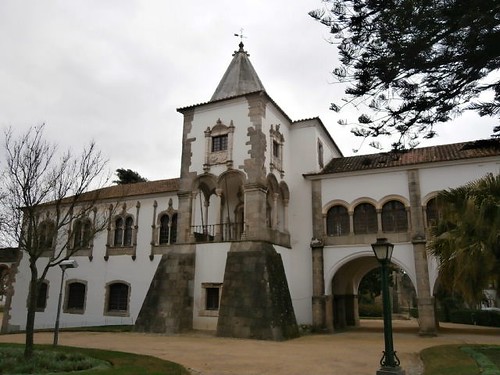|
 Palácio de D. Manuel - Évora
N 38° 34.071 W 007° 54.556
29S E 595021 N 4269386
Palácio Real situado no interior do Jardim Público de Évora.
Waymark Code: WMNEX8
Location: Évora, Portugal
Date Posted: 03/02/2015
Views: 2

| Palácio de D. Manuel |  O Palácio de Dom Manuel, situado em Évora, Portugal, outrora conhecido por Paço Real de S. Francisco foi mandado construir por D. Afonso V, que desejava ter na cidade um paço real fora do castelo para se instalar. O paço, habitado por vários monarcas portugueses, entre os quais D. Manuel I, D. João III e D. Sebastião, perdeu-se definitivamente no ano de 1895, tendo sido mandado destruir em 1619, aquando da visita de Filipe III ao país, que mandou destruir o palácio em pról da comunidade.
O paço era, segundo crónicas da altura, um dos edifícios mais notáveis do reino, tendo como principais construções o claustro da renascença, a Sala da Rainha, o refeitório e a biblioteca régia, sendo esta uma das primeiras do país.
Atualmente, o que resta do palácio é apenas a Galeria das Damas, representante exímia do estilo manuelino, mas com traços da renascença e que sobreviveu devido à sua utilização para Trem Militar. Esta compõe-se de um piso térreo, de planta rectangular, onde subsiste a Galeria, um pavilhão fechado e o alpendre. No piso superior existem dois salões e um vestíbulo de estilo mourisco. Do lado de fora existe o torreão, este é constituído por dois andares e terminando num pináculo hexagonal com uma porta manuelina.
O paço, para além de ter sido uma das maiores obras arquitetónicas do país, teve também uma enorme importância histórica, pois foi nele que Vasco da Gama foi investido no comando da esquadra da Descoberta do caminho marítimo para a Índia e foi também no palácio que Gil Vicente representou sete dos seus autos, dedicados às rainhas D. Maria de Castela e D. Catarina de Áustria.
|  The Royal Palace of Évora, located in Évora, Portugal, formerly known as Royal Palace of St. Francis was built by King Afonso V, who wanted to be in town a royal palace outside the castle to settle. The palace, inhabited by several Portuguese monarchs, including King Manuel I, King John III and Sebastian, definitely lost up in 1895 and was sent to destroy in 1619, during the visit of Philip III the country who ordered destroyed the palace in community pról.
The palace was, according to chronicles of the time, one of the most remarkable buildings of the kingdom, the main buildings of the Renaissance cloister, the Queen's Room, the dining hall and the royal library, which is one of the first in the country.
Today, what remains of the palace is just the Ladies' Gallery, excels representative of the Manueline style, but with traces of the Renaissance and has survived because of its use for military train. This consists of a ground floor, of rectangular shape, which retain the Gallery, an enclosed porch and pavilion. Upstairs there are two lounges and a vestibule of Moorish style. Outside there is a turret, this consists of two floors and ending in a hexagonal spire with a Manueline door.
The palace, in addition to being one of the greatest architectural works of the country, also had an enormous historical significance because it was here that Vasco da Gama was invested in fleet command of the Discovery of sea route to India and was also at the palace that Gil Vicente played seven of their selves, dedicated to Queens D. Maria of Castile and D. Catherine of Austria.
| 
Visit Instructions:
To post a visit log to this waymark you need to visit and write about the actual physical location. Any pictures you take at the location would be great, as well.
|